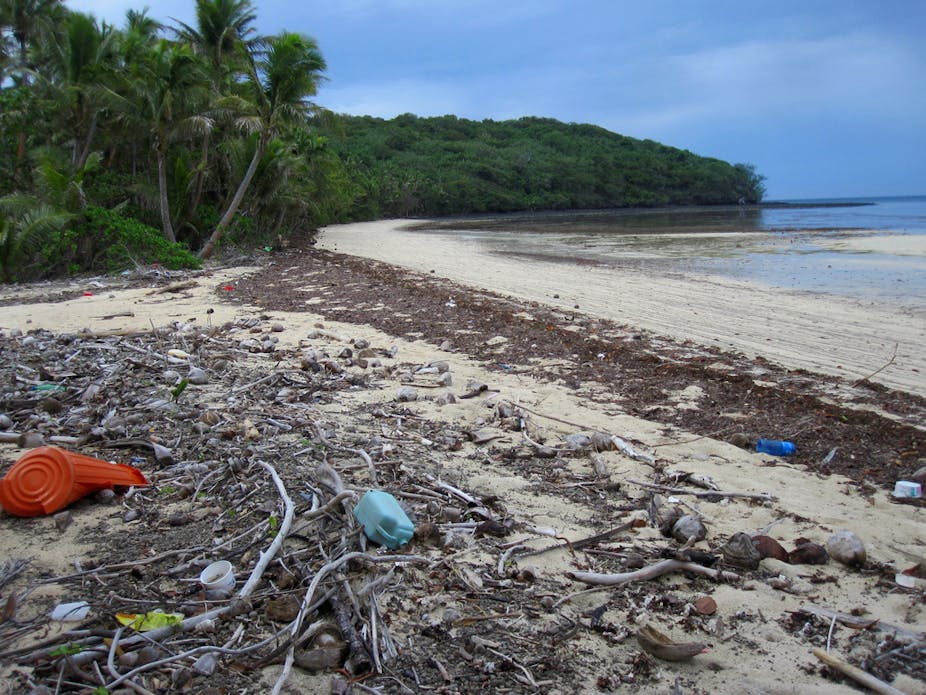Many of us eagerly await those few weeks when we can escape the daily grind and break away to some breathtaking holiday destination. But with increasing concern over climate change and the emissions generated by our travels should we be staying at home?
Tourism is one of the world’s largest industries. Global international visitor arrivals exceeded 940 million in 2010. The World Tourism Organization estimates that this number could reach 1.6 billion by 2020. Clearly then, deciding not to travel does not seem to be on many people’s agenda.
Mass tourism is hardly sustainable, so nature-based or ecotourism is often promoted as a cleaner alternative. But as eco-tourists, do our annual getaways end up harming the natural environment we set out to enjoy, or can our next adventure actually provide some sustainable benefit for conservation and local communities?
All tourism activities will have both positive and negative impacts on the natural, cultural and socio-economic environment. Furthermore, the impacts also occur at different scales: primarily local, regional and global.
Globally, tourism currently contributes about 5% of greenhouse gas emissions. Much of our impact (50-98%) arises from the travel component, primarily via plane or car. The remainder is derived from on-site impacts associated with accommodation and leisure activities.

Many tourists might question any link between their holiday and climate change. In reality the two are closely linked. The changing climate influences our choice of popular destinations such as beaches, islands and alpine resorts, but ultimately also their persistence.
But, as ecotourists can our demand for visiting unspoilt destinations actually benefit conservation efforts? There is resounding support for ecotourism from conservation groups like the IUCN, Conservation International and the WWF. Even so the answer is not a simple “yes”, or “no”, but more a question of how, when and where?
Conservation benefits depend to a large degree on the choices we make: the destination we pick out, the travel options we choose, the activities we participate in, and how the money we spend is redistributed.
Indeed, for many nations it is the revenue generated through ecotourism that continues to support conservation activities and enrich local livelihoods.
In many developing countries protected areas rely heavily on tourism fees. For example, national parks in South Africa, home of the iconic Kruger National Park, derive almost 70% of their income from tourism revenue (such as entrance fees, restaurants, accommodation, concession fees).
As more private wildlife-based ecotourism operators have set up in sub-Saharan Africa, there have been significant gains in the area of land set aside for conservation purposes. For example, private reserves currently cover more than double the area of public reserves in South Africa.
This has also contributed directly to species conservation. These operators need to deliver a wildlife experience and conserve wildlife populations because people come to these areas to see large mammals.
Local inhabitants too have benefited from ecotourism. It has increased employment opportunities, enhanced livelihoods and in some cases empowered entire communities. Community conservancies in Namibia are an example of successful linkages between conservation and socio-economic development.

Ecotourism also drives changing attitudes towards conservation. These changes are seen in the travellers themselves (who might take on volunteer conservation tourism), the host communities (where there is empowerment of local guides and reduction in poaching), commercial operators (who might become responsible tourism operators) but also in government (where there can be changes in legislation to support sustainable tourism).
It is not all a bed of roses. There is a need to address critical issues about equitable distribution of benefits and the transparent engagement of local communities. But positive steps are being made.
Tourism, and ecotourism in particular, can deliver net conservation benefits, particularly at a local level. But how can we make these benefits regional and global?
One way people try to make their tourism more sustainable is by making responsible travel choices. A widely used way of making travel “greener” is the purchase of voluntary carbon offsets to counterbalance travel emissions. However, support for such schemes is not unanimous.
Travel choices may also be constrained by the availability of options. For example many travellers in the European Union could comfortably switch to train transport, while for Australians travel beyond the continental borders invariably requires air travel.
But truly adopting the responsible tourism ethic goes beyond simply diverting environmental travel costs. We need to reduce our overall impact. It is about changing our attitudes and behaviours. We should minimise and mitigate potential impacts and deliver lasting benefits at our chosen destinations but also when we return home.
So when planning your next wilderness adventure, consider this. How big is your travel footprint? Can you get to your destination using alternative transport (such as a train or bus)? Are there local destinations you have yet to explore? Is there an opportunity to support a local conservation project? Can you be part of the solution?

